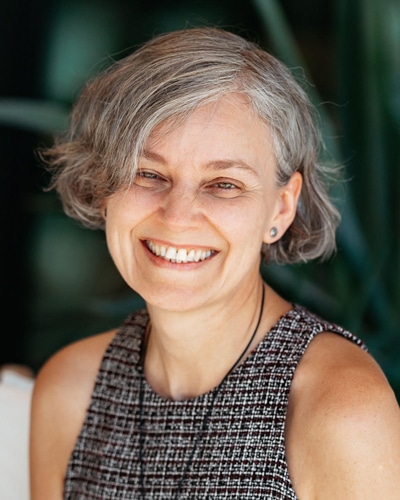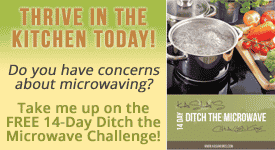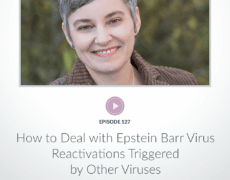The danger your tea, salt and seafood have in common!
This post contains affiliate links, which means we may receive a commission from purchases.
MICROPLASTIC
We already know that drinking water from plastic bottles may not be the safest way to get hydrated due to plastic contaminating the water. Plastics have been shown in research to contribute to risk for cancer, autoimmune disorders, and hormonal havoc, among other things. You probably already try to limit your use of plastic bottles because you also worry about them landing in our oceans.
But what about microplastic?
Microplastics are the size of sesame seed or smaller, measuring less than 5 millimeters, according to the National Ocean Service. The plastic we throw into garbage lands in the oceans, and unfortunately, over the years it becomes fragmented from sun exposure and rough sea currents, fooling small fish as foods, and as a result suffocating marine birds’ and mammals’ stomachs. Eventually, the pieces become so small that they may not be visible to the naked eye.
And yes, we do consume microplastic! A 2018 study of stool samples from people from various countries tells us so [1]! Every single stool sample contained micro plastics, and the study subjects came from various countries.
Research on the tiny pieces of plastic we ingest on a daily basis is alarming enough that I wanted to share simple things you can do to minimize your exposure!

Photo by Jonathan Chng on Unsplash
HOW MUCH EXPOSURE DO YOU HAVE?
According to a new study by the Journal of Environmental Science and Technology, here are the three highest sources of microplastics Americans are exposed to:
- Water from bottled water
- Air!!!!!!
- Seafood
What you can do:
- Get a water filter. Here are very good options for getting around and staying hydrated without relying on plastic bottles – I use both of these water filters daily:
- Berkey [use this link for a 5% discount] -They do have a traveling bottle with a filter although it is plastic (they claim it is non reactive, but plastic is plastic); you can use your own glass or stainless steel bottle to travel with; if you travel in a car, you can take your big Berkey with you! The company claims that while they do not have data at this time to say for sure how much of microplaslic is removed, they expect a high percentage.
- Aquasana [use this link for a 10% discount] – They offer a stainless steel traveling bottle with a filter in it. The company claims their water filtration removes 99.69% of microplaastics.
- Make sure you have a good air filter like Austin Air [use this coupon code for a 10% discount: EBVHEROES10]
- or Light Air
- Consider cutting down on or eliminating seafood from your diet.
TEA TIME! IS IT TIME FOR A CHANGE TO YOUR REGULAR TEA?
A new study in the Journal of Environmental Science and Technology shows that the beautiful shiny upscale plastic teabags release billions of microparticles and nanoparticles into tea [2]. This image comes from the study.
The study showed that
“steeping a single plastic teabag at brewing temperature (95 °C) releases approximately 11.6 billion microplastics and 3.1 billion nanoplastics into a single cup of the beverage. The composition of the released particles is matched to the original teabags (nylon and polyethylene terephthalate) […]. The levels of nylon and polyethylene terephthalate particles released from the teabag packaging are several orders of magnitude higher than plastic loads previously reported in other foods. An initial acute invertebrate toxicity assessment shows that exposure to only the particles released from the teabags caused dose-dependent behavioral and developmental effects.”

Photo by Content Pixie on Unsplash
What you can do:
Only use paper tea bags and choose a tea company that is meticulous about the lowest available chemical processing. Ideally, switch to loose organic teas.
Here is an example of a cleaner tea brand: Choice Organic Teas.
Choice Organic Tea has very good environmental practices for their tea bags and a great loose tea selection and discount incentives for their online customers. While they no longer sell on their website, they are available in many stores.
Here is why I love Choice Organic Teas: their tea bags are staple-free, flow-through tea bags and are made with unbleached, natural paper/abaca fibers and sewn shut with an unbleached natural cotton string. The filter paper they use for their tea bags is in compliance with all EU/FDA and German regulations for safe contact and use in food and epichlorohydrin has been shown as non-detectable in tests. They have purchased this filter paper from the same company for over a decade and have found they have the highest level of technical expertise with respect to the filtration paper used in hot and cold extraction.
Get tea in bulk!
There are some beautiful clean herbal companies that ship quality bulk organic teas. My favorite is Mountain Rose Herbs.
DOES YOUR KITCHEN SALT CONTAIN MICROPLASTIC?
A recent environmental study analyzed 39 brands of commercial salt from 21 countries, including Europe and the US, to find that 36 contained microplastic, which is about 90% [3].
Only three brands of investigated salts did not contain any microplastic particles in both replicate samples: refined sea salt from Taiwan, refined rock salt from China mainland, and unrefined sea salt produced by solar evaporation from France.
Sea salt had the highest level of microplastic!
What you can do:
Stop using a regular sea salt.
Switch to Celtic sea salt. The study showed that salt that is produced with a traditional method of evaporation of ocean or sea water that is minimally processed does not contain microplastic: microplastic from it is left behind along with trace minerals. Traditional Celtic sea salt from France is an example of that.
Another option is Real Salt (aka Redmond salt), a pink-colored salt that comes from salt mines of Utah. Since it is harvested from unpolluted ancient seabeds, chances of plastic contamination are next to none.
When you eat in a restaurant, avoid adding salt to your meal. If you enjoy more salt in meals, bring your own salt!
Bottom line:
We live in an increasingly toxic environment that our parents and grandparents did not have to maneuver. Going back to basics is a simple solution:
- Opt for bulk tea like Mountain Rose Herbs
- Switch to the traditional Celtic sea salt or Real Salt
- Get a quality air filter like Austin Air [use EBVHEROES10 to get 10% discount] or Light Air
- Get a quality water filter like Aquasana [use this link for a 10% discount] or Berkey [use this link for a 5% discount or use code KINES5]
References:
- https://pubmed.ncbi.nlm.nih.gov/31476765/ and https://www.ueg.eu/press/releases/ueg-press-release/article/ueg-week-microplastics-discovered-in-human-stools-across-the-globe-in-first-study-of-its-kind/
- https://pubs.acs.org/doi/10.1021/acs.est.9b02540
- https://pubs.acs.org/doi/10.1021/acs.est.8b04180
LEAVE A COMMENT
If you want to transform your life, if you want health and wellness, if you want peace of mind, there isn’t a better investment than working with Kasia.~ Beth

























0 Comments
No comments yet